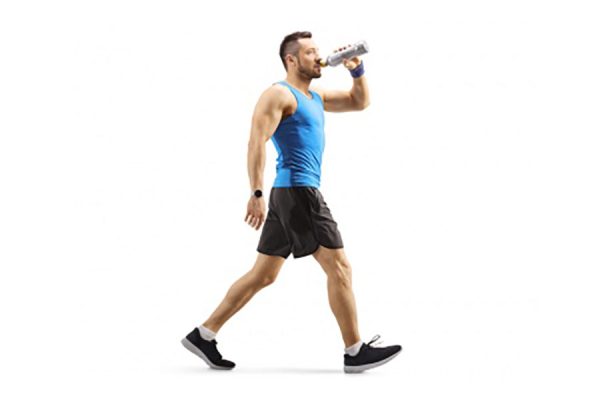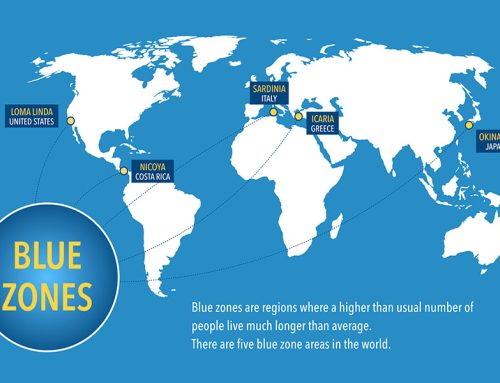Running vs walking: Which is better? Well, both are popular activities for fitness and health, but it’s commonly believed that walking isn’t intense enough to benefit your health much and you’d get more benefit if you ran. Not only that, many people don’t like to run, or they’ve had an injury and can’t run even if they wanted to. People who are non-runners who think they must run get results often become despondent. Some might end up not doing either…

In a similar train of thought, many fitness enthusiasts believe that unless cardio is high intensity, as in interval training and so on, it’s not beneficial (“high intensity or nothing” mentality).
It’s true that high intensity interval training (HIIT) can produce major improvements in health and cardiovascular fitness in a remarkably short period of time. But does that mean lower intensity exercise like walking is not effective at all?
Not according to a well-publicized study from Lawrence Berkeley National Laboratory. The results found that walking briskly can lower your risk of high blood pressure, high cholesterol and diabetes (all risk factors for heart disease) as much as running and the benefits increased in a dose-response manner.
There’s great confusion, to this day, about the benefits of exercise – including at various intensities (moderate vs vigorous) and many people confuse health benefits, cardiovascular fitness benefits (such as increasing VO2max) and fat loss. These are all related, but separate topics.
This study looked at health benefits, specifically risk factors for cardiovascular disease in subjects 18 to 80 years old, clustered largely in their 40s and 50s. Here were the findings when comparing walking vs running:
- Running reduced risk for first-time hypertension 4.2 percent and walking reduced risk 7.2 percent.
- Running reduced first-time high cholesterol 4.3 percent and walking 7 percent.
- Running reduced first time diabetes 12.1 percent compared to 12.3 percent for walking.
- Running reduced coronary heart disease 4.5 percent compared to 9.3 percent.
Here was the only catch: they weren’t comparing equal amounts of time spent (like 30 minutes of walking vs 30 minutes of running), they were testing whether equal amounts of energy (calorie) expenditure by moderate intensity walking and vigorous intensity running provided equivalent benefits.
The results confirmed it – when energy expenditure was equivalent by moderate exercise (walking) and vigorous exercise (running) the health risk reductions were similar, but of course, that means it takes a lot more time investment walking to achieve the same energy expenditure.
So, contrary to what many people believe, it’s not that walking doesn’t benefit your health as much as higher intensity types of exercise, walking is simply not as time efficient (same thing with fat loss – moderate exercise burns fat, but intense exercise burns fat in less time). This is why people who are short on time, and are physically able to do intense exercise, often choose the higher intensity cardio.
However, high intensity cardio is difficult and not appropriate for everyone. The author of the study, Paul Williams, pointed out that walking may be a more sustainable activity for many people when compared to running.
He said that people are always looking for an excuse not to exercise (“I can’t run or do HIIT because of my knee,” etc.), but seeing these research results, they now have a straightforward choice to run or walk to invest in their future health).
Whether you like to walk, run, or pace yourself anywhere in between, if you would like some motivation to do your favorite cardio activity of choice more consistently, then join us for the 2024 Fall Burn the Fat Million Step Challenge. It’s a free fitness challenge sponsored by Tom Venuto and Burn the Fat Inner Circle.
To learn more click the link below:
==> 2024 Burn the Fat Million Step Challenge
Train hard and Expect Success!
Tom Venuto

Tom Venuto is a natural bodybuilding and fat loss expert. He is also a recipe creator specializing in fat-burning, muscle-building cooking. Tom is a former competitive bodybuilder and today works as a full-time fitness coach, writer, blogger, and author. In his spare time, he is an avid outdoor enthusiast and backpacker. His book, Burn The Fat, Feed The Muscle is an international bestseller, first as an ebook and now as a hardcover and audiobook. The Body Fat Solution, Tom’s book about emotional eating and long-term weight maintenance, was an Oprah Magazine and Men’s Fitness Magazine pick. Tom is also the founder of Burn The Fat Inner Circle – a fitness support community with over 52,000 members worldwide since 2006. Click here for membership details
Scientific References
Paul T. Williams, PhD and Paul D. Thompson, MD. Walking vs running for hypertension, cholesterol, & diabetes risk reduction, Arterioscler Thromb Vasc Biol. 33(5): 1085-1091. Berkeley National Laboratory.






I’d love to know the benefits of walking vs. walking on a motorized treadmill, including the variable of being able to add elevation.
Im not sure what the scientific literature says without looking into the research, but I can say that incline walking on a treadmill is outstanding exercise that significantly increases calorie burn over flat walking, so not only we would assume increased fitness and health benefits but also increased fat loss benefits, making it more time efficient too. Inclined treadmill walking has always been very popular with bodybuilders to the higher calorie burn without the impact that might cause interference effects in the lower body
It seems many ” trainers” think they’re geniuses who’ve discovered the Holy Grail with HIIT, or it’s the ” new thing” equivalent to perfecting nuclear cold fusion
There were scientific papers on the benefits of interval training written in 1890..yes, 134 years ago.
Finnish running teams extensively used interval training on their way to several Olympic gold medals in the 1920s, yes, around a CENTURY ago
That’s 100% correct. I just read a paper on the history of interval training. HIIT only blew up in the mid to late 1990s when the Tabata protocol was introduced. not that im knocking it… some of the recent research shows extremely impressive results from HIIT in very short periods of time and ive always thought it was worth it to do 1 or 2 sessions a week for some additive unique benefits especially in fitness/conditioning, but simple walking provides surprisingly strong health benefits.
As an older woman sorting through the changes needed to shed fat in my late 60s, this is brilliant news! Thanks Tom, for all you do to keep us both informed and motivated.
Brilliant news for lots of people indeed!